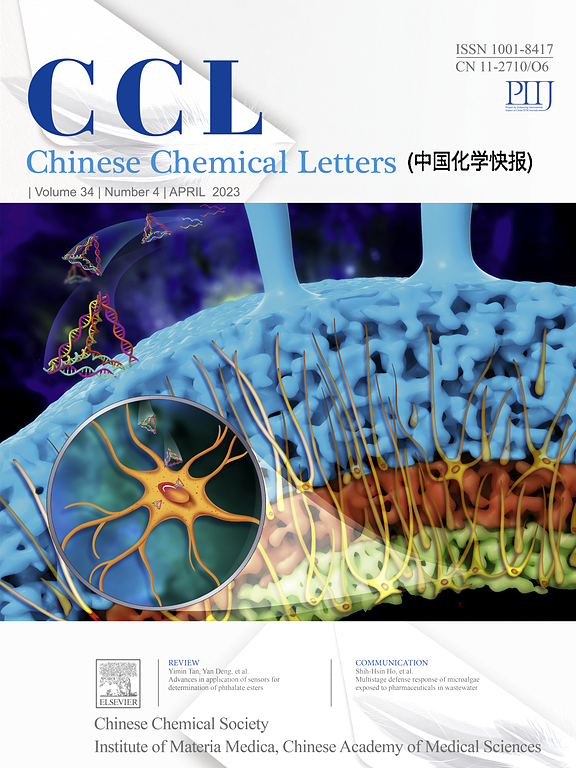Boron cluster-based TADF emitter via through-space charge transfer enabling efficient orange-red electroluminescence
IF 9.4
1区 化学
Q1 CHEMISTRY, MULTIDISCIPLINARY
引用次数: 0
Abstract
Thermally activated delayed fluorescence (TADF) materials driven by a through-space charge transfer (TSCT) mechanism have garnered wide interest. However, access of TSCT-TADF molecules with long-wavelength emission remains a formidable challenge. In this study, we introduce a novel V-type D-A-D-A' emitter, Trz-mCzCbCz, by using a carborane scaffold. This design strategically incorporates carbazole (Cz) and 2,4,6-triphenyl-1,3,5-triazine (Trz) as donor and acceptor moieties, respectively. Theoretical calculations alongside experimental validations affirm the typical TSCT-TADF characteristics of this luminogen. Owing to the unique structural and electronic attributes of carboranes, Trz-mCzCbCz exhibits an orange-red emission, markedly diverging from the traditional blue-to-green emissions observed in classical Cz and Trz-based TADF molecules. Moreover, bright emission in aggregates was observed for Trz-mCzCbCz with absolute photoluminescence quantum yield (PLQY) of up to 88.8 %. As such, we have successfully fabricated five organic light-emitting diodes (OLEDs) by utilizing Trz-mCzCbCz as the emitting layer. It is important to note that both the reverse intersystem crossing process and the TADF properties are profoundly influenced by host materials. The fabricated OLED devices reached a maximum external quantum efficiency (EQE) of 12.7 %, with an emission peak at 592 nm. This represents the highest recorded efficiency for TSCT-TADF OLEDs employing carborane derivatives as emitting layers.

求助全文
约1分钟内获得全文
求助全文
来源期刊

Chinese Chemical Letters
化学-化学综合
CiteScore
14.10
自引率
15.40%
发文量
8969
审稿时长
1.6 months
期刊介绍:
Chinese Chemical Letters (CCL) (ISSN 1001-8417) was founded in July 1990. The journal publishes preliminary accounts in the whole field of chemistry, including inorganic chemistry, organic chemistry, analytical chemistry, physical chemistry, polymer chemistry, applied chemistry, etc.Chinese Chemical Letters does not accept articles previously published or scheduled to be published. To verify originality, your article may be checked by the originality detection service CrossCheck.
 求助内容:
求助内容: 应助结果提醒方式:
应助结果提醒方式:


